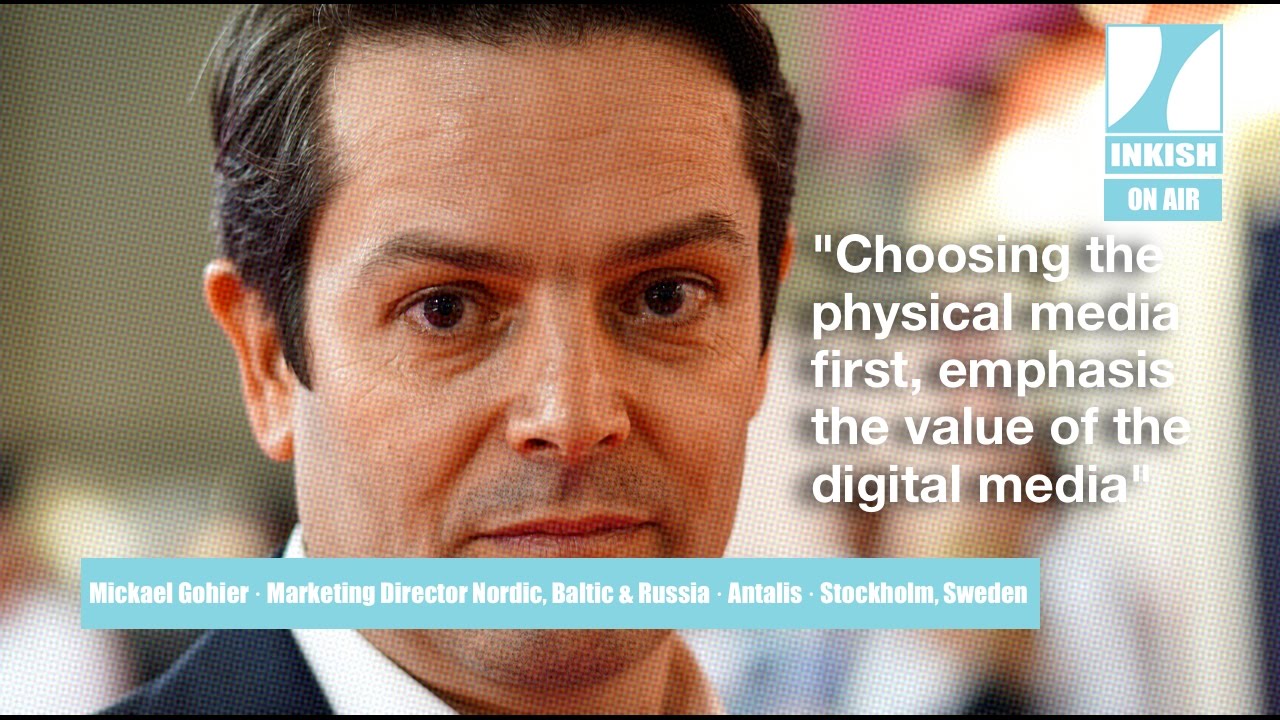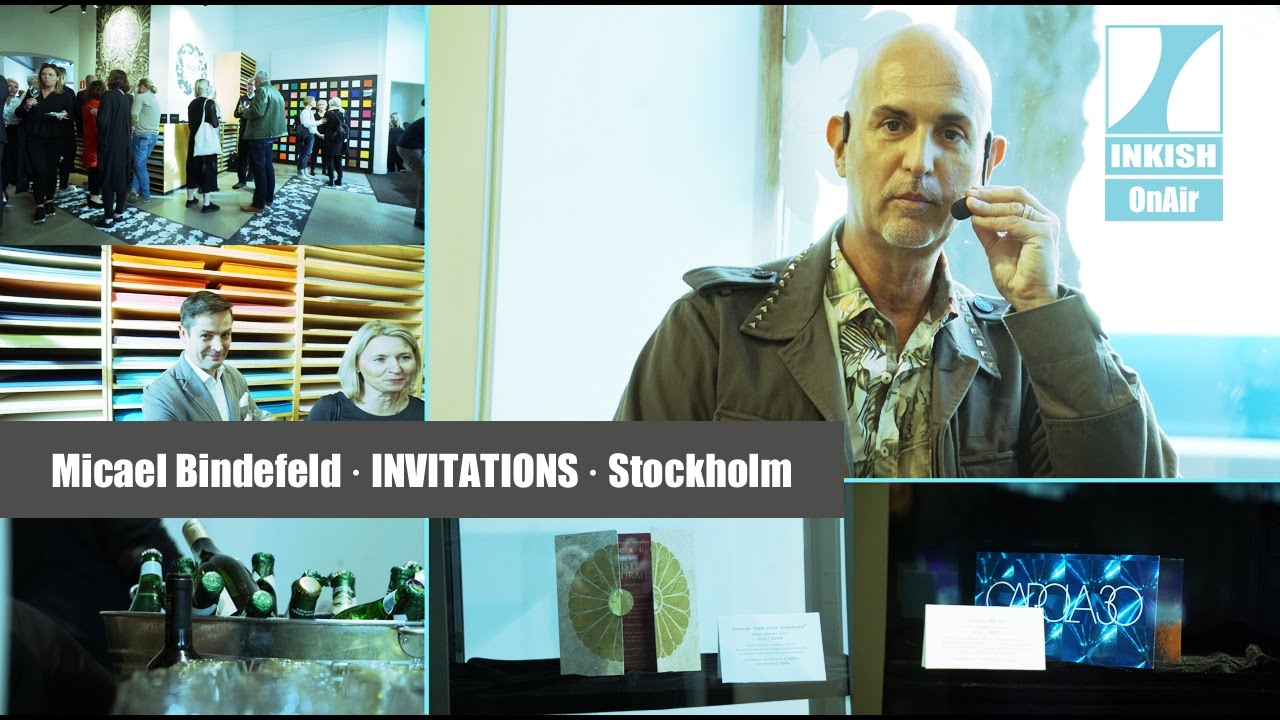INKISH.TV proudly presents: Mickael Gohier · Marketing Director Antalis
The paper industry has also been challenged since the financial crisis took off in 2008, but Antalis has developed new strategies, products, and services and seems to be in good shape for the future. Please listen to Mickael Gohier from Antalis – he is a quite interesting guy, who share some of his ideas with you – here on INKISH.TV.
0:06 Paper is a key component in all printed products and therefore an important part of the design process.
0:11 We spoke with Antalis and asked them some questions surrounding the paper industry. Since the financial crisis in 2008, they have come up with strategies and innovations to stay competitive.
0:19 Why should people choose Antalis as a supplier?
0:21 Well, I think two key points. I mean, we have the biggest and the deepest range of products in the market. That’s one. And, we strive to always find the most innovative product to make sure we can give opportunities for the printers to create values for their consumers. So, basically, we work it out on keeping this assortment the best combination possible. Then, the second point, that’s the key one. See, that’s really the main differentiating point for the competition. We are very good at servicing our customers. Both, in terms of logistic services, but also in terms of expertise. And, that’s where we make the big difference. Trying to build this ecosystem between the printer, the end user and the merchant, and the suppliers, to make sure that we create a discussion platform to find new applications, to add value to the food chain, and in the end, to enhance printed communication possibilities, basically.
1:32 Paper is underestimated in today’s industry. Is the price then the most important issue for a printer?
1:36 Yes, and we see this more and more. And, that’s really what we have to communicate on, basically ñ the power of printed media and physical media. And, we see actually studies coming out, in weeks and month, in Scandinavia, demonstrating that there’s no actually impact on your communication if you use physical media first, and then drive the consumer to the digital content. And, that’s really what we try to convene in our education, evangelization, because we believe in this. And also, the second factor we have to take into consideration is the millennial generation has been fed by the digital content, and to actually engage deeper with them, the printed physical media is a good alternative. So, we do think we need to work with the agencies, hand on hand with our marketing departments to rebalance the focus of the marketing span, basically, and to combine both communication together, physical and digital.
2:47 So if you choose to use paper before using digital media, the value of the marketing effect will be higher?
2:51 The most effective marketing campaign will go this way: start engaging with the physical media, which is more qualitative, and then give more information with the digital platform, which gives more possibilities. And, keep nurturing the consumer through time, which you cannot do with physical media. So, it’s a good combination.
3:14 Antalis has a showroom in central Stockholm. It’s close to many agencies so they can show designers and decision makers the value of physical media.
3:21 We do education school, like classes. And, we also do events to illustrate, basically, the different possibilities of printed media. And, there are more and more responsibilities. We can see here in Sign & Print, all the audience, especially on the digital printing side, are creating new ways of communicating. So, we need to push that to the agency so that they keep the awareness of the field of possibilities.
3:53 Since the financial crisis in 2008, have you as a paper supplier felt the decrease in market in a same way as the printing industry?
3:57 Yes, a constant decrease since 2008. That’s why we need to refocus on the possibilities on the application side, and also to stop the fight between physical media and digital media, but to combine both together, and look at ways of bridging the two together. That’s really the key. And, here we have new products coming that could do that. We know about the QR code. But, the QR code was not so successful, so we are trying to look at other possibilities technically, to bridge between the physical media and the digital communication. And, we have such a product, actually. This is the business card. Inside the business card, we actually have a chip which allows you to ñ if you place your mobile phone on it, to go to the digital platform, the idea is to ñ in a much more easier fashion than with the QR code, is to bring you to the digital content. So, you don’t need to scan or to have a nap. It’s even better than augmented reality, because you just, you know, place your phone, it’s like smart payment. And, like when you pay with your card, contactless payment, and you get to the platform, and you can start your inbound marketing basically.
5:25 How does Antalis prepare for a digital future?
5:27 Basically, this is exactly the trend. We have to deal with much shorter ink job. So basically, the digital world is bringing this possibility, but we need to also make sure the full ranges is compatible with this digital print technology, working out with the suppliers. And, we have the new ñ well, the new range for Arjowiggins Creative Paper is basically doing this. All of the range is now compatible with both dry toner and liquid toner. And, that’s what we need to be launched this year. And, we’re really looking forward to giving again the same possibility done on the offset printing in the digital world.
6:07 So you have survived the crisis and are profitable in the market that has decreased right?
6:10 That’s it. But, we need to keep at it. So, digital, green paper, connected paper, the future of all areas which we believe can create value for us, or the printer, but also for the consumer. And, the pioneer should recognize, that’s unstated. And, I believe the marketing way of communicating is evolved to make more connection between these two media. And, that’s where we want to be basically, to have this in this position.




































































